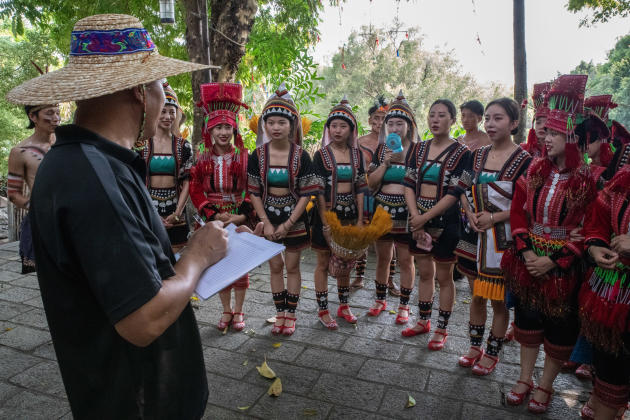A showcase of Chinese modernity since the 1980s, Shenzhen is not content with just housing several tech giants – Tencent, DJI, Huawei… − which have become the United States’ nightmare. To allow the inhabitants – 300,000 at the death of Mao Zedong in 1976, more than 17 million today – to breathe and escape for a few hours from the factory of the world, the local authorities have imagined three large leisure parks placed in a row, in the southwest of the city. The first is a “world in miniature” (the Eiffel Tower stands next to the Pont du Gard), the second a China in miniature, and the third a “village of folk cultures”.
In this ultra-connected megalopolis in the province of Guangdong, where self-driving cars are beginning to have the right of citizenship and where millions of Chinese from all over country, they have to pay no less than 200 yuan (about 25 euros) to see other Chinese dancing shirtless with feathers on their heads, pretending to churn yak butter, despite the 35 degrees in the shade , or ride a horse along the ancient Silk Roads.
Welcome to the folk village: an amusement park where Uighurs, Tibetans, Mongols, Lisu, Miao and other members of minorities, all young, beautiful and smiling, welcome you in traditional costume and perform choreographies inspired by their customs or culture. ancient history of China. If the architecture of the buildings seems faithful to the original models, the outfits, all impeccable, seem straight out of the clothing workshop and the shows are often far from reality. Thus the Dai, who, in the province of Yunnan, sprinkle themselves with water at the new year to make the bad spells of the previous twelve months disappear, are here asked to do so every weekend. Tourism obliges.
Is it so important? Probably not. Moreover, of the fifty-five ethnic minorities officially recognized by China, only a dozen are represented. And the Mongolian horseman of the 3 p.m. show bears a strange resemblance to the Uighur who greeted us two hours earlier in the village of Xinjiang, as well as to the naked percussionist who will beat the drum at the end of the afternoon. “We are from a minority, but we perform in several shows”, says a park employee, between two performances. He only sees advantages. This is how he met his wife, from another ethnic group. “Out of six hundred employees, around one hundred come from minority ethnic groups. Now that their home provinces are developing, it is more and more difficult to retain them”, regrets a park manager. Moreover, he laments, these young people “know less and less about their customs”. Despite decent wages (about 1,000 euros per month, according to an employee), the park would have difficulty recruiting.
You have 70.15% of this article left to read. The following is for subscribers only.
